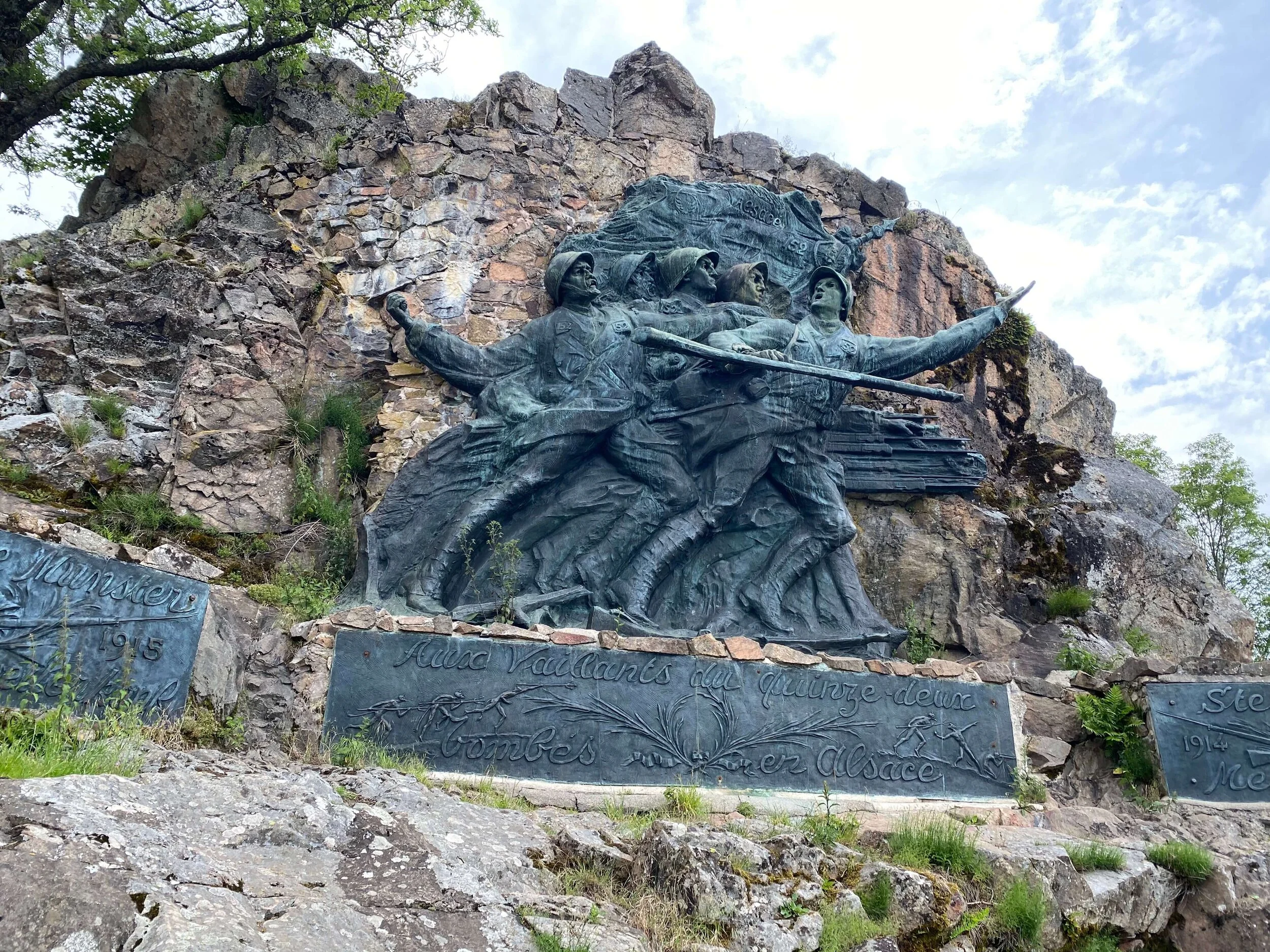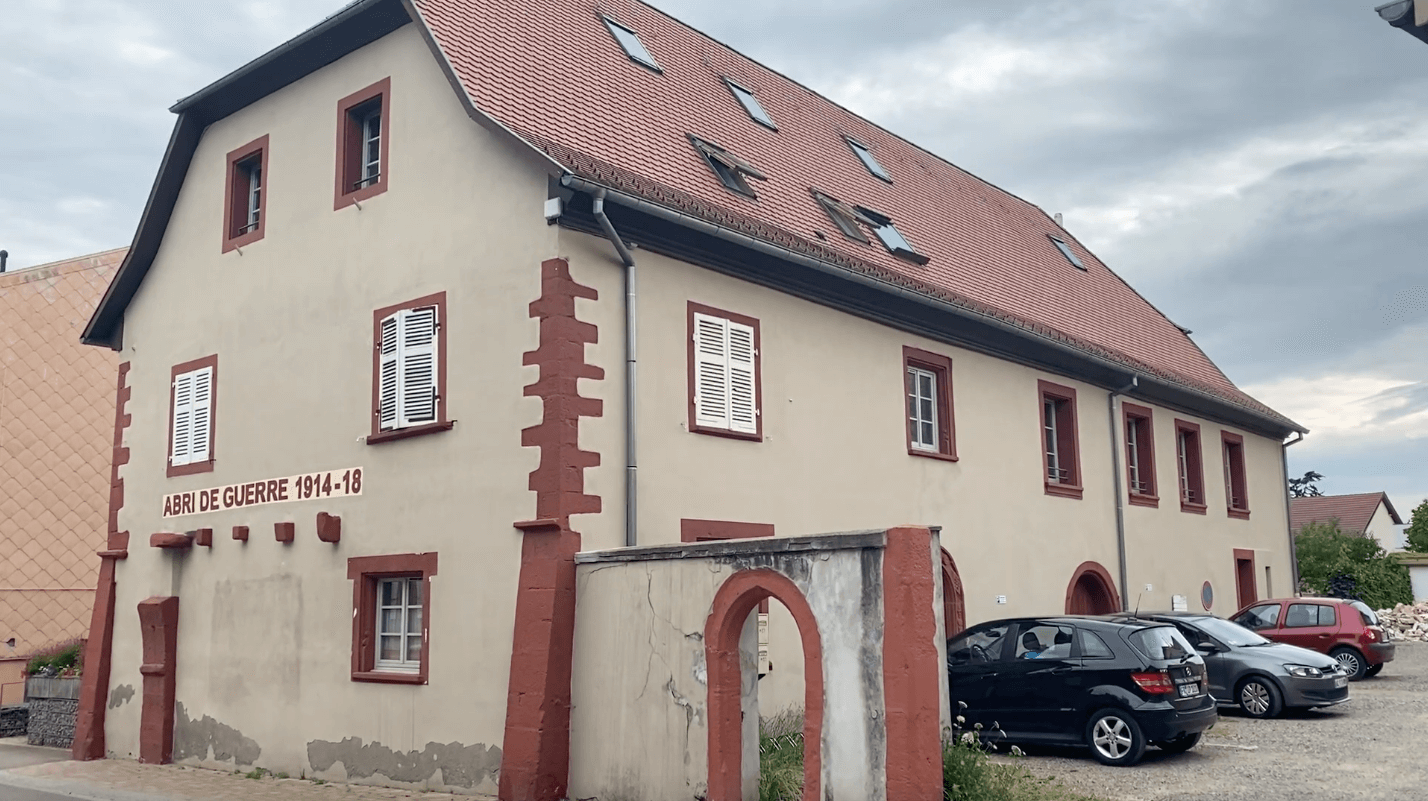Death Mountain - WW1 Battlefield Hartmannswillerkopf
Hello and welcome to the On the Front blog, my name is Matt and today we are doing something a little bit different and exploring the World War One battlefield of Hartmannswillerkopf.
The Hartmannswillerkopf also known as Vieil Armand, the mountain was renamed by the French following the war, stands at an imposing 956m and was of strategic importance to both the French and the Germans to control the Alsace valley below.
This somewhat forgotten battlefield saw some of the bloodiest and brutal fighting of the War, nick named “Death Mountain” some 30,000 French and German troops would lose their lives here.
View overlooking the memorial
I say this battlefield is somewhat forgotten, although great effort has been made to remember the soldiers who fought and died here, it is not in the global conscience when we think about the First World War battlefields of France.
The battles to the north of the Somme, Verdun, Villers-Bretonneux, Vimy Ridge are what spring to mind but we forget that the Western Front stretched 750km from the shores of Belgium on the North Sea, to kilometre 0, an hour’s drive from Hartmannswillerkopf to marker 111, the official start point of the Western Front on the borders of France, Switzerland and Germany.
The memorial at Hartmannswillerkopf is unique as the site is one of only four national monuments in France dedicated to those who fought and died in the Great War. The battlefield was classified a historic monument as early as 1921, officially inaugurated in 1932.
Memorial Alter
Memorial Crypt
The memorial was designed to be a pilgrimage, built from donations to remember the sacrifice and victory of the French nation. The monument consists of a large open cemetery containing the graves of 1,264 soldiers who could be identified, leading to the Alter of the Fatherland and the crypt containing the remains of 12,000 unknown soldiers. Inside are also weapons and equipment recovered from the battlefield.
The fighting for Hartmannswillerkopf raged from 1914 through to the conclusion of the war in 1918 with the bulk of the fighting occurring in 1915. The battlefield is remarkably preserved and traces of the brutal fighting can still be seen today.
The fighting in the region of Alsace was unlike any other on the Western Front. Firstly, it was a mountain war and not the muddy fields we are accustomed to seeing further north but perhaps more importantly was motivation to fight here.
View from the Hartmannswillerkopf summit
Map of German and French lines. Inc the memorial
For the Germans, it is a question of defending the national territory in Alsace. For the French, it was the symbol of reclaiming the "lost provinces". The French had ceded the regions of Alsace and Lorraine to the Prussian empire following their defeat during the Franco-Prussian war in 1871. The loss of these regions festered in the minds of both the French public and military alike. A national humiliation that needed to be rectified during the next war with the Prussians. As such, the offensive in Alsace and the Battle of Mulhouse comprised the opening French attacked of the war during the Battles of the Frontiers.
The opening battle for Hartmannswillerkopf began on December 30th, 1914. In thick snow, the French forces pushed the Germans off the summit. The ferocious attack saw the French army capture the summit on January 3rd, 1915. Earning them the nickname the “Blue Devils”. The next day the Germans launched their counterattack. The following weeks saw fierce fighting as each side made minimal gains. Renewed attacks by the German divisions Fuchs in thick fog between the 19th and 21st of January manage to surround the French forces ultimately recapturing the summit. French counter attacks are repulsed, and the Germans began to dig in
German trenches
In March, French reinforcements arrive and renewed attacks begin on the 17th. Every cm of ground was fought for tooth and nail until on the 26th following a large artillery preparation French forces captured the Hartmannswillerkopf in only 10 minutes, taking over 400 German troops prisoner. As the French reach the top, they are confronted with a moon landscape as the once forested peaks have been stripped by artillery. Following the French victory German army chief of staff, General Erich von Falkenhayn orders all offensive operations in Alsace to stop as the German Army focuses its attention north.
For the rest of year fighting would be limited to localised skirmishes, with German forces re-capturing the summit on the 25th of April but were pushed back the next day. Later in the year German forces implemented the use of flamethrowers and dislodged the French from the peak in October but were ultimately pushed back.
German officers at Hartmannswillerkopf
The last major offensive occurred on December 21st, 1915. French forces attempted to consolidate their positions and in a broader offensive to capture the town of Mulhouse. The attack saw initial success but the next day the Germans reinforced their positions and launched a large-scale counterattack almost annihilating the French divisions on the mountain. The French suffered 1,998 casualties and 1,553 soldiers taken prisoner. By January 8th, 1916 the French offensive had been defeated. The German army had re-captured the peak and all French gains from the offensive had been lost.
German hospital. The local museum today
For the remainder of the war the lines remained stable with both sides only exchanging artillery. Ultimately neither the French nor the Germans ever made any significant progress. Especially not enough to justify the thousands on both sides who died here. Following the armistice and conclusion of the First Word War, German troops would fully withdraw from Alsace by November 17, 1918.
Let me know your thoughts about the Battle of Hartmannswillerkopf in the comment section below and if you would like to cover more history about the Firth World War.
If you liked this video, please hit that like button and remember if you would like to more content from me to hit that subscribe button and I’ll see you next time On the Front.









